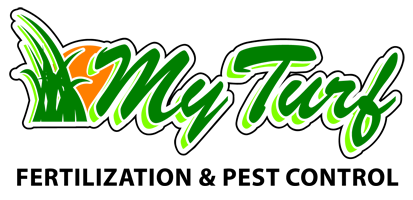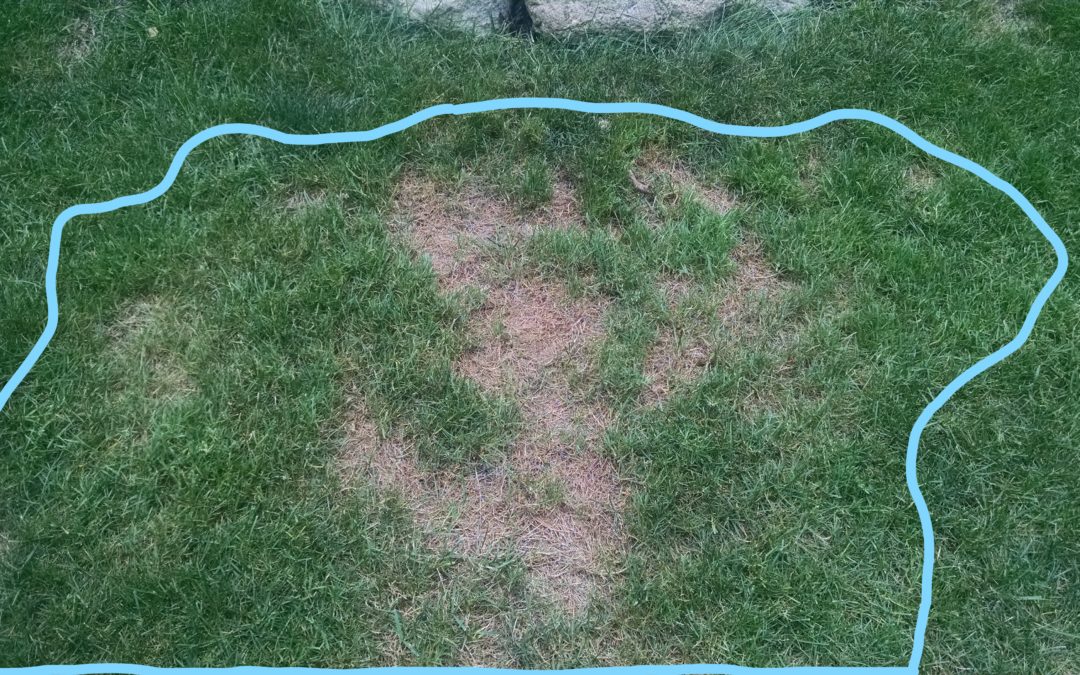
by Amy Zevenbergen | Aug 9, 2017 | Blog
The past few weeks have been a bit stressful on lawns so this change in weather is welcome. In Grand Rapids in the month of July we had only 1.12″ of rain which was 2.66″ below average. One issue I have seen pop up in the most recent dry spell is that some areas of Annual Bluegrass or poa annua are dying out in the heat. Annual Bluegrass is a junk variety of grass that blows or spreads into residential turf here in West Michigan. It is not included in seed mixtures, and was never planted in your lawn like Kentucky Bluegrass was. Annual Bluegrass has a very shallow root system, and is therefore quite weak and is not very drought tolerant or disease resistant. In good growing conditions you may not know it is even there except for by it’s lighter color and the heavy seed head that it produces in the spring. After this past dry spell I have seen it die out on several lawns. This doesn’t happen every year but with the right conditions it can. Annual Bluegrass is really not an annual here in West Michigan since it doesn’t typically get hot enough in the Summer to die out, or cold enough in the Winter to die out. Annual Bluegrass loves lots of moisture, cool weather, and shade, but is aggressive enough that it can compete just about anywhere. In the first picture you can see the areas of annual bluegrass circled look lighter in color and much of it has burned out while the other cool season grass mixture surrounding it is unaffected. If you look closely in the second picture you can see it is quite obvious that the affected grass is much rougher and more stringy than typical cool season grasses. It almost has the look and feel of pine straw.
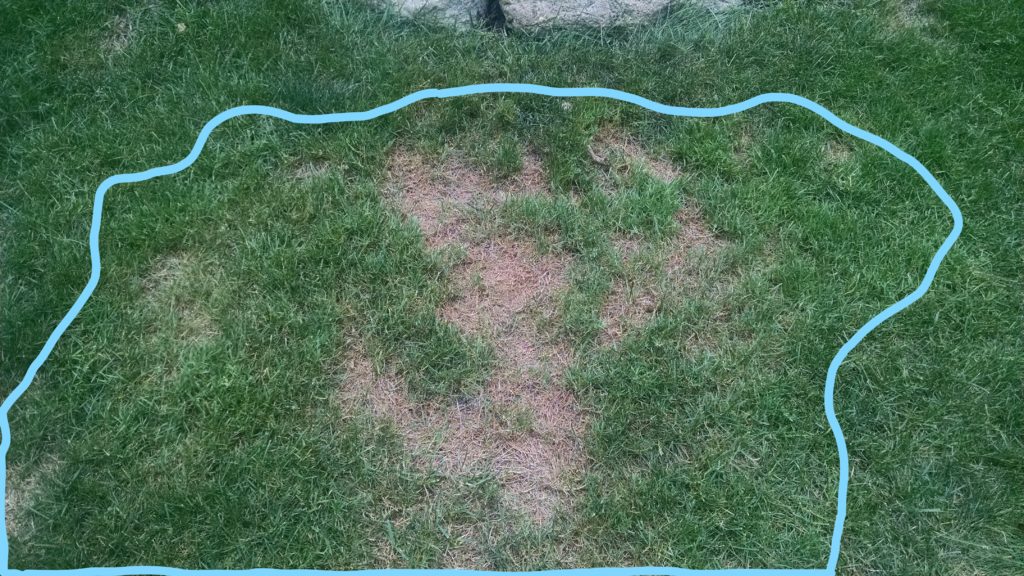
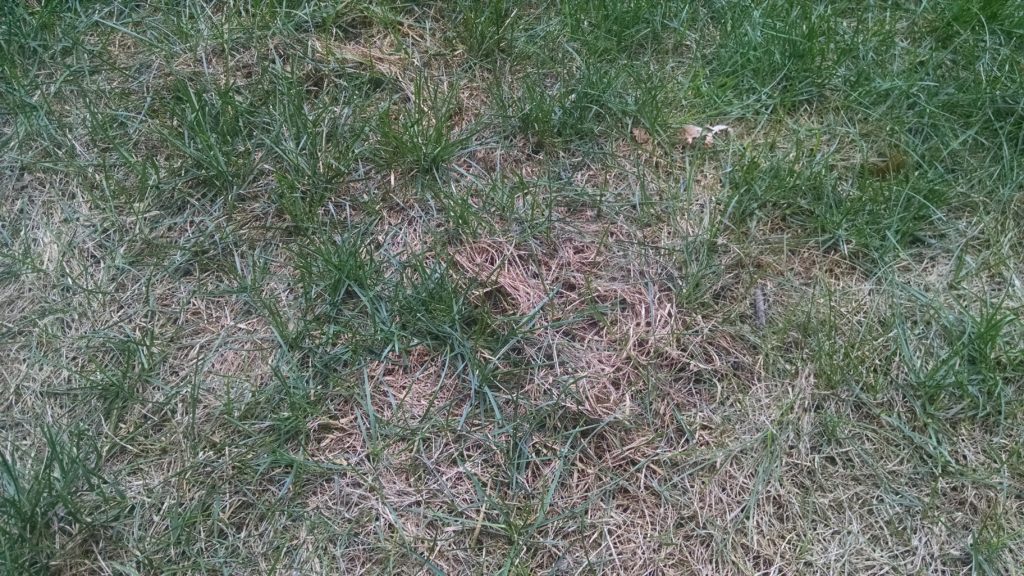
Once this happens you are left with two choices. You can either let it go and unfortunately it will grow back from it’s own seed that it has produced in previous years, or you could take the opportunity to rake out the areas and seed them with a good quality seed mixture to try to overcome the annual bluegrass and keep it from coming back. Reseeding the spots is definitely the preferred method to help control this grass on a longer term basis. As always, please call or email if you have any questions. 616-813-3135 or office@myturfllc.com
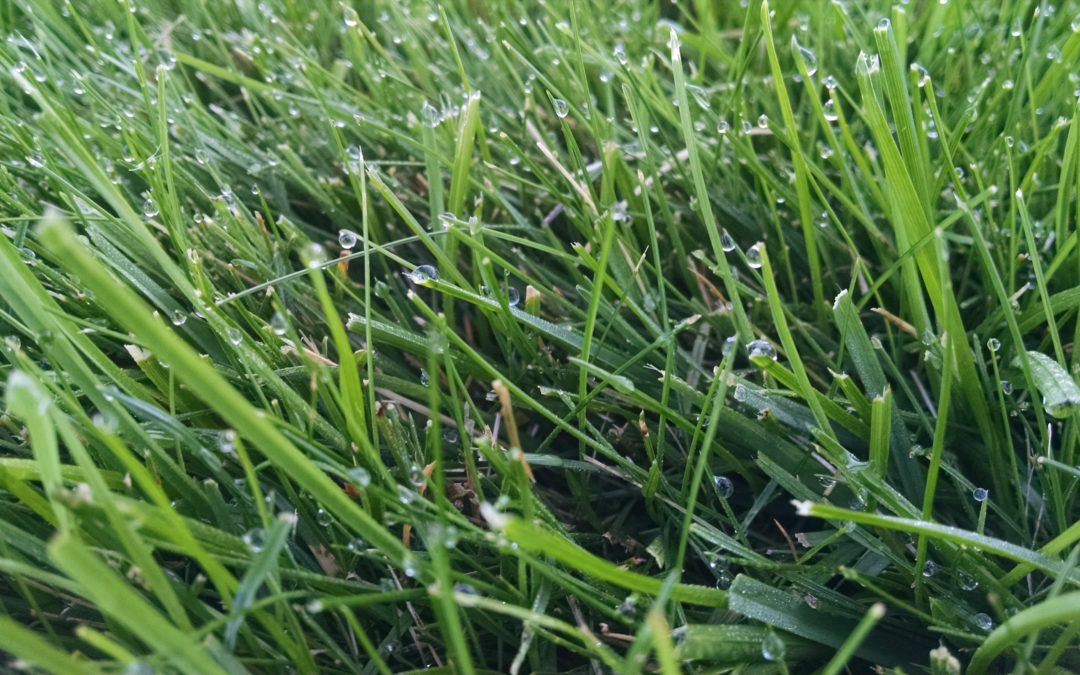
by Amy Zevenbergen | Jul 11, 2017 | Blog
This time of year it seems you wake up every morning to a lawn full of dew, or what you think is dew. Interestingly enough, much of what you are seeing is most likely guttation water. Dew forms when condensation occurs and moisture will form somewhat evenly on the leaf surface. You can see in the first picture the thin layer of moisture on the entire leaf surface from dew. Guttation water is the larger droplets of xylem sap that the plant omits from the water glands, or hydathodes near the tips of the leaves. These droplets are much larger than dew. These droplets are very obviously different from the thin layer of dew you can see on the leaf surface in the pictures below.
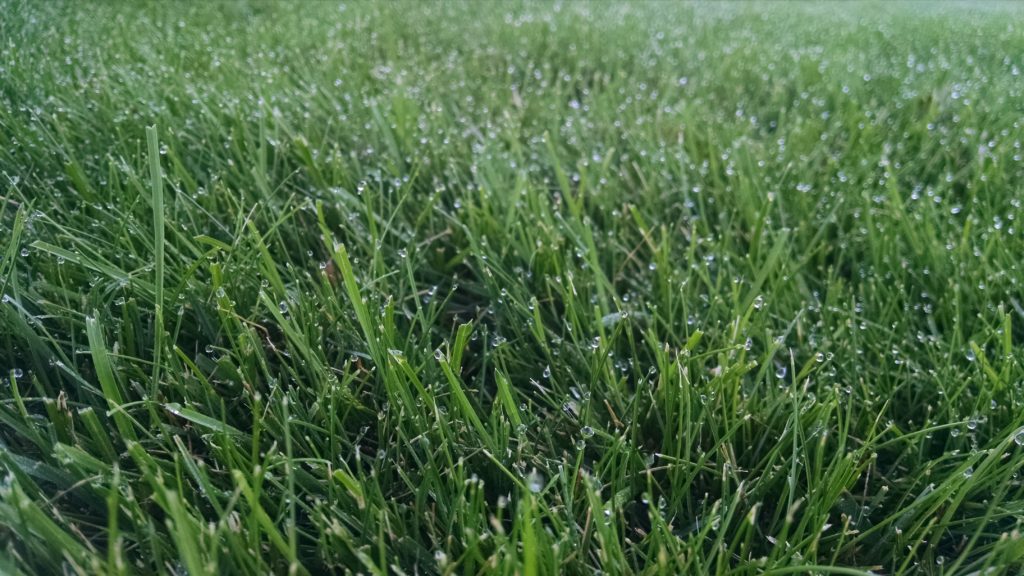
These pictures were taken around 6am a few days ago in my front yard. No irrigation was applied that morning as that would have washed off the guttation water.

So why do we care? Scientists have found that guttation water contains different organic and inorganic compounds, including sugars and other proteins. These compounds are a food source for disease pathogens and can therefore have an affect on the severity of disease in your lawn. All lawns have different pressures but if you have a lawn that historically has had issues with different diseases you may want to consider running a very light (several minutes per zone) irrigation period on the mornings that you had not planned on watering. We are not looking to actually give the turf any water on these days, just wash off the guttation water and spread it out so it dries faster. This watering cycle can be applied around 6am. Any golfer with an early morning tee time will generally see the grounds crew busy rolling or dragging the moisture on the greens and tee boxes. Yes, this is partly to spread out the moisture for better ball roll, but they are mainly doing this to help prevent disease on their greens and tee boxes. So, if you are fighting disease, the next time you plan to skip a watering cycle maybe instead consider a real quick cycle to rid yourself of the guttation water.
Any questions or concerns? Please email office@myturfllc.com or call us at 616-813-3135.
Jason Kregel
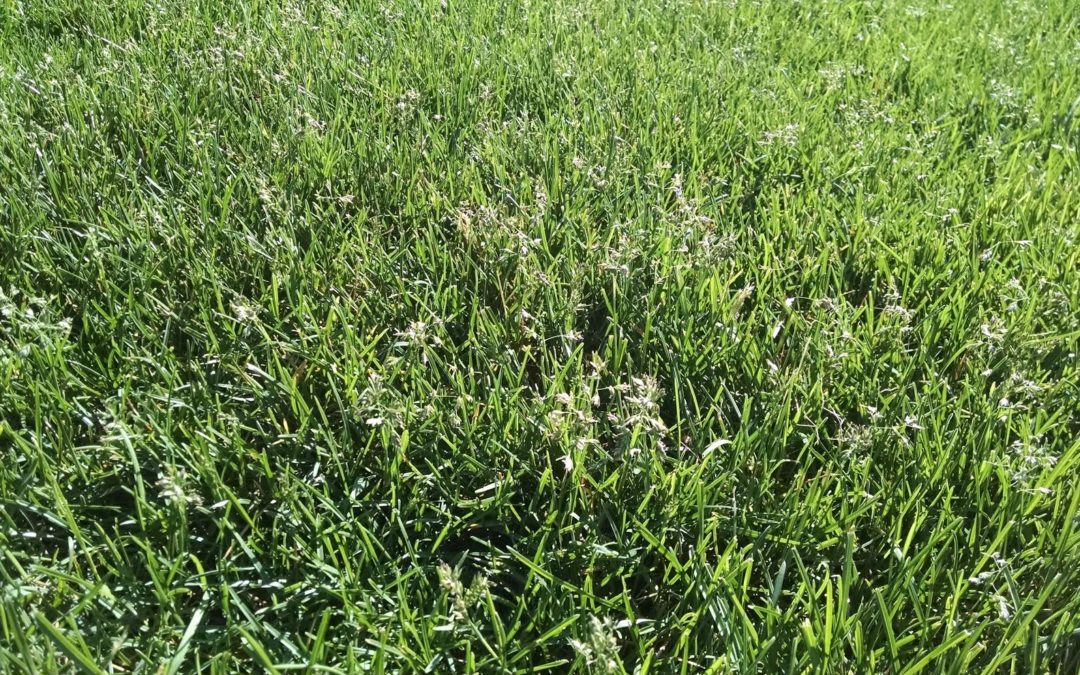
by Jason Kregel | Jun 7, 2017 | Blog
Almost all grass varieties produce seed at some point throughout the spring season. This is a normal part of their life cycle. It does, however put the lawns under a bit of stress during that period. Lawns tend to get a little more coarse and the stems are more prevalent. It looks like we are almost through this period and lawns should soften out with adequate water and our slow release fertilizer applications kicking in.
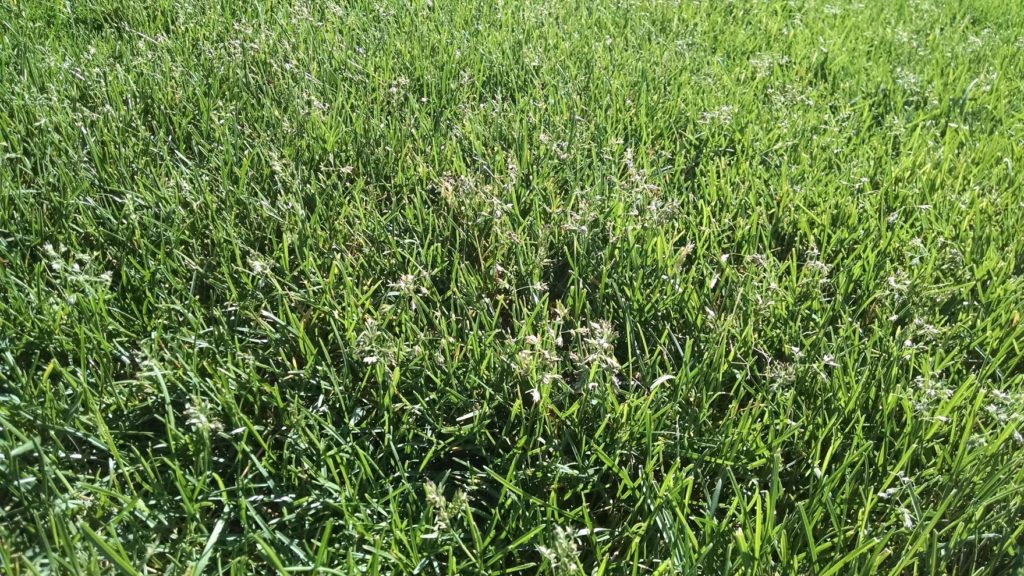
They are forecasting 90 degrees for some of this weekend through early next week so make sure you are watering sufficiently. Lawns will burn up fast in that kind of heat and may even show heat tracking from our equipment or your mowing traffic. See an article on heat tracking written by Dr Kevin Frank from the MSU Extension here: http://msue.anr.msu.edu/news/warm_dry_weather_causes_heat_tracking_in_lawns . Most rotor sprinkling zones should be set at a minimum of 20 to 30 minutes per day EVERY DAY right now to prepare for this weekend and keep up with the heat. Depending on soil conditions some zones will need as much as 35 or 40 minutes during extreme heat and lack of rain. Remember that these are averages and every site is different. One good way to track watering is to put a shovel in the ground and check the soil profile. If you can take the soil from 1″ deep and rub it in your hands and it turns to powder, you are much to dry. It typically takes 20 minutes of watering just to soak through the leaf and thatch layer and begin penetrating the root system. There needs to be some moisture in the soil to sustain healthy root systems. Properly watered soil will stick together slightly when rubbing between your hands.
If you have any questions please don’t hesitate to call us at 616-813-3135 or email us at office@myturfllc.com
“I treat your turf like it’s My Turf”
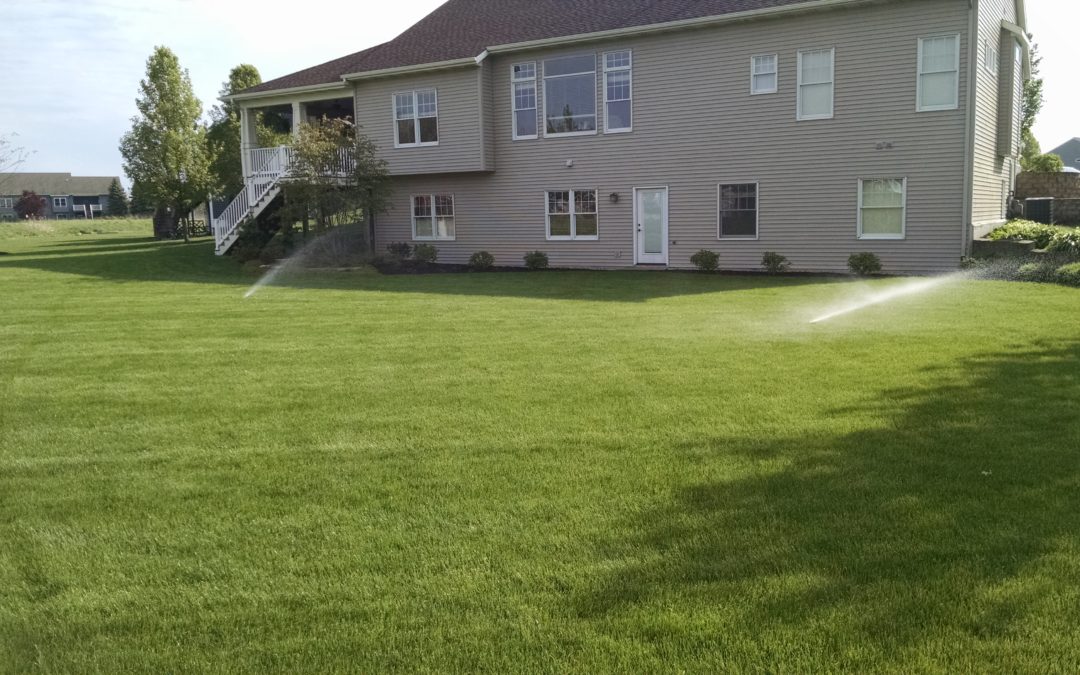
by Jason Kregel | May 15, 2017 | Blog
Just a quick reminder on the summer temperatures coming up. Things are warming up with temperatures projected to be in the 80’s for a few days this week. If you haven’t started your irrigation system or begun watering yet you should do so very soon. A few light waterings per week right now depending on your soil type should be all you need to keep things looking nice.

Also please be sure to raise your mowing height in preparation for the warmer weather. We recommend 3-3.5″ beginning now through the end of the summer. Make sure to check your mowing height with a ruler. I just met with a customer last week and we measured his grass at 2″ and his John Deere riding lawn mower was set to 3.5″. Unfortunately most mowers have inaccurate mowing heights listed and will in turn cause you to mow much too short. Keeping high cut turf is one of the most important things you can do to help your lawn flourish. Please email or call 616-813-3135 if you have any questions.
“I treat your turf like it’s My Turf”
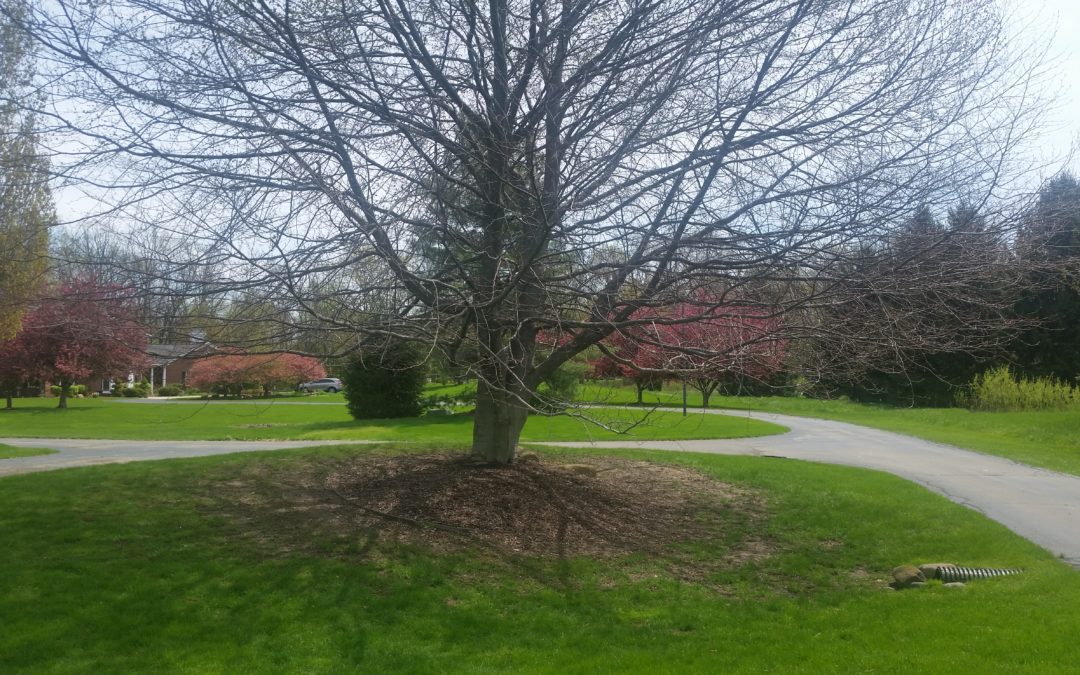
by Jason Kregel | May 4, 2017 | Blog
Are you struggling to grow grass in the shade? A common problem we see in the spring wake up period is poor turf density within the drip line of a tree. Depending on the situation, a thick turf in these areas may or may not be possible. There are several factors at play here, which will need to be addressed to encourage new grass in these weak shade areas. Keep in mind that shade areas will be the slowest to wake up in the springtime and can take up to a month longer than sunny areas to grow up to full mowing height.
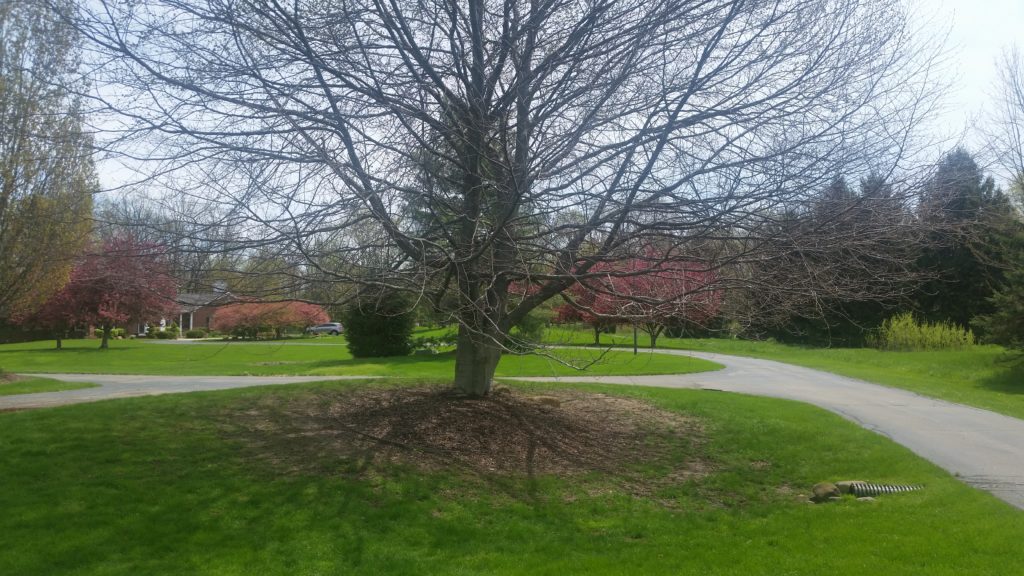
Soil- What is below the tree? If you have a towering maple tree with a 30′ wide drip line, just imagine the root system below your feet that is necessary to keep that tree alive. Evergreen trees have a very shallow fibrous root system that is very close to the surface as well. As these roots grow they take up more and more space and compact the soil more and more, leaving very little growing media for the tender grass to take root in. In addition to that, as air temperatures rise these tree roots remove much of the moisture out of the soil and will dry out the grass under the tree quite quickly. What’s the solution? Four things need to be done: 1. Core aerate around the tree to loosen the soil as much as possible and add a thin layer (.5-1″ thick) of new soil to the area when seeding. The new seed will root into the loose soil and be uninterrupted by the tree roots. Unfortunately over time the tree will root up into the new soil and you will need to repeat the process. We have found that compost works quite well for this situation. 2. Keep a closer eye on soil moisture in your shade areas. In the months of July and August the trees will really start to take a toll on the grass beneath them and will dry out the soil very quickly, which will in turn thin out the turf considerably. Schedule an additional light watering in the afternoon in these areas to keep them moist. 3. Give up on some areas. If you have massive surface roots near the base of the tree, it is just not realistic to expect grass to flourish there. Consider expanding a mulch bed around the tree to cover a much larger area, then continue with your attempts to grow grass outside of this “non-grass” area. 4. Keep traffic to a minimum. Foot traffic and mowing traffic affect shade areas. If you have a push mower, I would recommend using it rather than putting a riding mower on it. Try to walk on it as little as possible. Turf in the shade has a very weak root system and does not hold up to traffic well.
Pruning- What is blocking the sunlight above you? If you want to grow grass in the shade, keep in mind that most grass varieties take a minimum of 4-6 hours of sunlight per day to grow well. The shape of the tree will directly affect this. Remember that for much of the spring and fall the sun rises and sets to the south, so keeping that southern exposure open is important. Consider cutting back low hanging branches and thinning out the trees as much as possible. In extreme cases you may be forced with a decision to completely remove a tree if you would like to achieve a decent stand of grass in that area.
Seed Variety- Consider this common scenario: A house was built 15-20 years ago on an open lot. One tree is planted in the front yard and one in the back yard. They are relatively small trees and shade is not an issue. The lawn gets seeded with a full sun mixture consisting of mainly Ryegrass and Bluegrass. The lawn looks great for many years. Fast forward 15-20 years and these two trees planted are now creating some shade. Your full sun seed mixture is not so happy under the trees anymore. As conditions change we need to address that by introducing a different seed mixture. In order to grow grass in the shade you will need to match the seed with the conditions. Consider reseeding with a moderate shade seed mixture, or in extreme situations use a dense shade seed mixture. These shade mixtures will have much less Rye and Blue, and have much higher percentage of Fine Fescue varieties. We typically don’t prefer to plant Fine Fescue in a full sun situation but in a shade area it can be an excellent choice. With the proper seed mixture you can get away with as little as 4 hours of sunlight. Keep in mind the grass will never be as thick as it could be in the full sun, but you will have grass coverage.
Moss- while not always a problem in the shade, moss can definitely work against your efforts. Moss loves shade. Moss loves damp. If you put these conditions together you could see moss slowly taking over the turf in these areas. The issue with moss is that the growing pattern is so dense that it can choke out every opportunity for your good grasses to grow. It can be pretty tough to prevent moss from growing without an environment change, but it can be controlled. All you need to do is add 2-3 oz of liquid original Dawn dish soap to 1 gallon of water in a hand sprayer. Shake well and spray on the moss anytime it is actively growing. An additional application may be needed for complete control. Once the moss is dead you can rake and continue with the reseeding process. This solution is especially helpful from a continued maintenance standpoint. If you have been able to achieve decent grass in a shade area but are plagued by moss continually creeping in, we have found that one or two spot applications per year will help to keep the moss in check.
These tips, combined with an understanding of what is achievable, will help you in your work to grow grass in the shade. If you have any further questions on this please don’t hesitate to call us at 616-813-3135 or send us an email to office@myturfllc.com
“I treat your turf like it’s my turf”
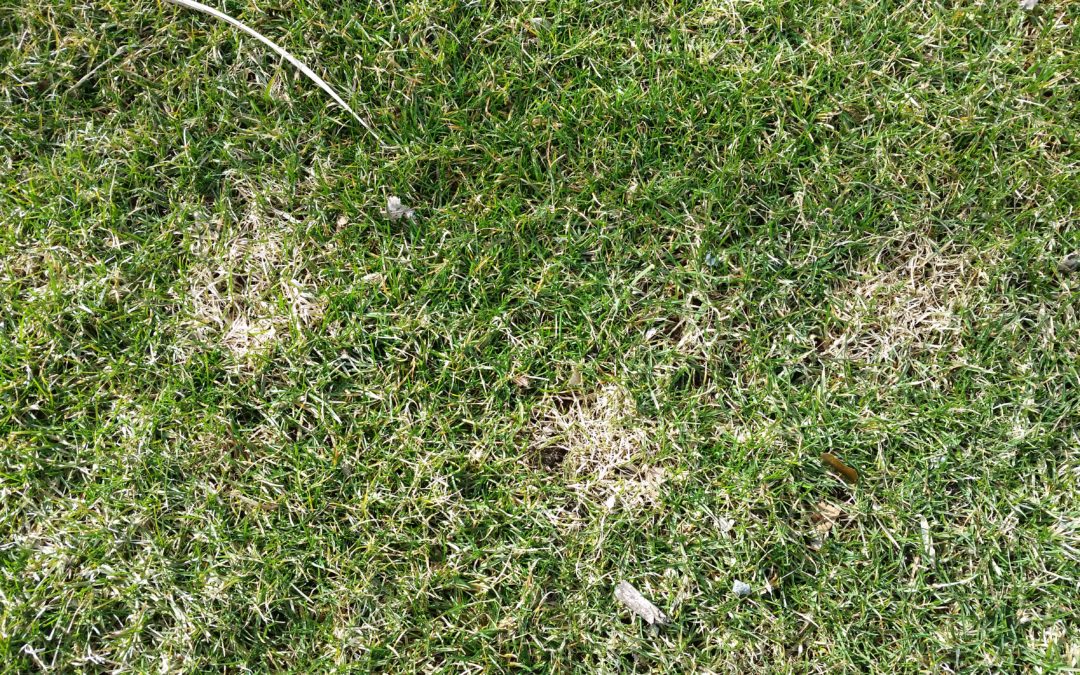
by Jason Kregel | Mar 29, 2017 | Blog
A little spring raking is never a bad idea. Snow mold can be a common sight in West Michigan lawns during the spring, especially in shady or wet areas. We are not seeing too much of a problem with snow mold this year (most likely because we had little snow cover this winter) but it is around here and there. Snow mold is a fungus that typically affects lawns in the early spring. It can have a pink or gray appearance, and typically ranges in size from 1″ to 6″ across. A little light raking with a leaf rake is best to open up the matted appearance and allow for a quicker recovery. Late March is a great time in West Michigan to take care of any of the fungus present. If extreme snow mold is not opened up by raking to allow for proper airflow, the grass can completely die out in these areas. We recommend lightly raking any other heavy thatch areas or damage areas from voles over the winter. Please call or email if you have any questions.
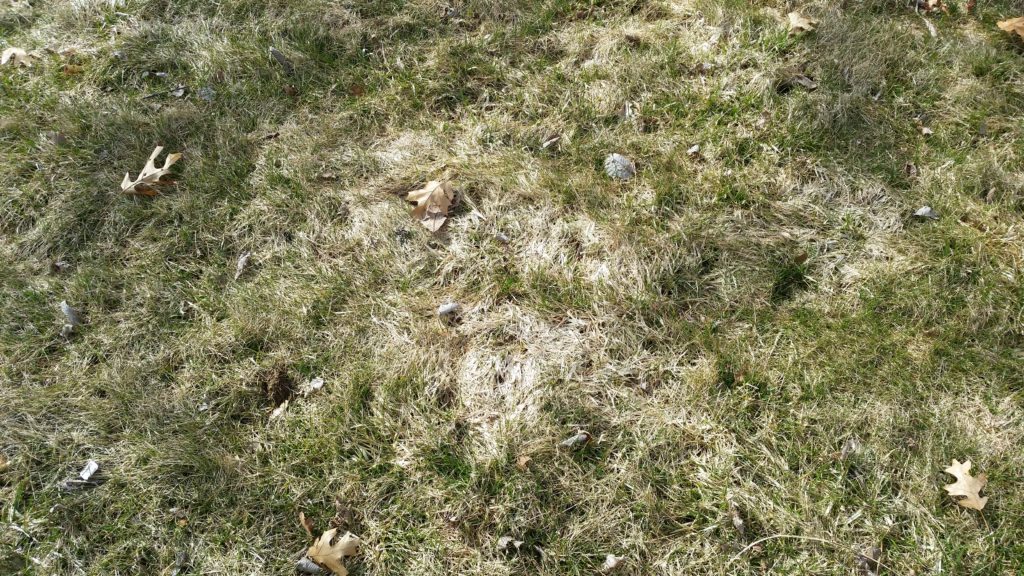
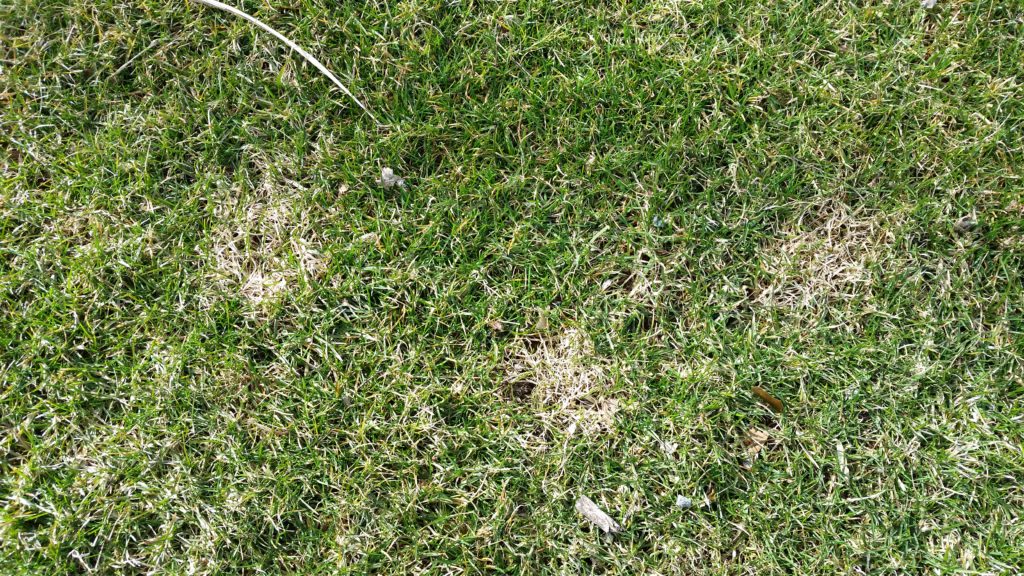
“I treat your turf like it’s My Turf”

